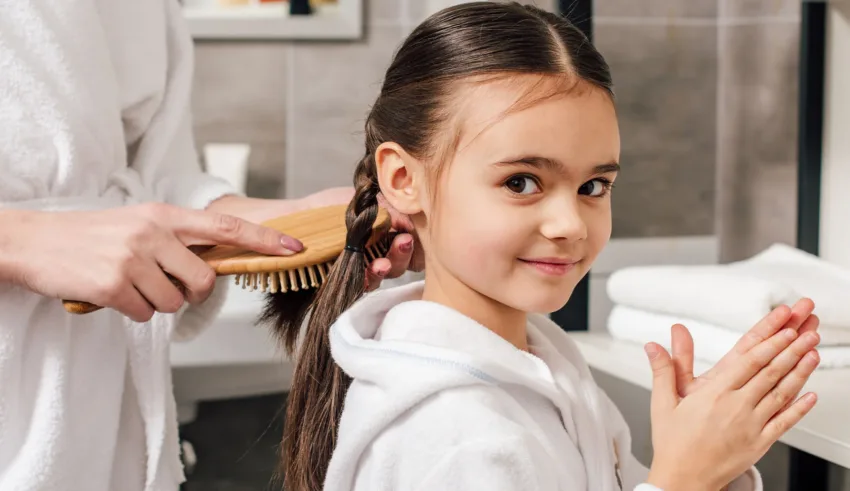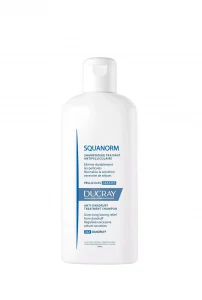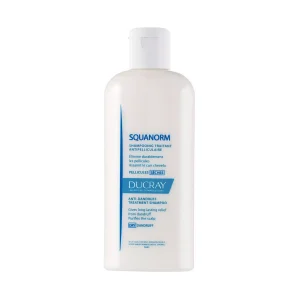
As parents, you strive to provide the best care for your children, ensuring their health and happiness. But what happens when pesky flakes start to appear on their precious scalps? Dandruff in children can be a source of frustration and discomfort, causing itching, embarrassment and even impacting self-esteem. The good news is that understanding the causes and solutions to this common scalp problem can help you eliminate that dandruff and restore your child’s confidence.
Join us in this article from The Dermo Lab in collaboration with the dermatologist Dr. Omina Khater as we explore the world of dandruff in children, its causes, effective treatments, and essential tips for a healthy, dandruff-free scalp. Get ready to say goodbye to dandruff problems and welcome back those happy, carefree heads!
What factors contribute to the appearance of dandruff in children?
Dr. Omina Khater says that dandruff is a common scalp condition characterized by the shedding of dead skin cells, resulting in white flakes and, in some cases, irritation. Although it is more common in adults, dandruff can also affect children.
Dr. Omina Khater adds that dandruff in children is not always a sign of poor hygiene. While infrequent washing can lead to the appearance of dandruff, other factors, some of which have nothing to do with cleanliness, can be at the root of this scalp problem in young people.
From hyperactive sebaceous glands to fungal infections, we’ll uncover the underlying causes and help you understand why your child may have that frustrating dandruff.
- Overactive sebaceous glands: The scalp contains sebaceous glands that produce sebum, an oily substance that moisturizes the scalp. When these glands become overactive, excessive sebum production can lead to dandruff.
- Fungal infection: Dr. Omina Khater indicates that a frequent cause of dandruff is a yeast-like fungus called Malassezia, which naturally resides on the scalp. In some cases, an overgrowth of this fungus can lead to dandruff.
- Dry scalp: Dr. Omina Khater believes that dandruff can be caused by dry skin, especially during the winter months when the air is dry and humidity is low.
- Sensitivity to hair care products: Some children may have a sensitivity or allergic reaction to certain hair care products, such as shampoos, conditioners, or styling products. These reactions can lead to scalp irritation and dandruff.
- Hormonal changes: Hormonal fluctuations during puberty or other growth phases can have an impact on scalp sebum production and contribute to dandruff formation.
- Poor scalp hygiene: Dr. Omina Khater notes that not washing the hair regularly can lead to a build-up of dead cells and sebum on the scalp, which can contribute to dandruff.
- Genetic predisposition: According to Dr. Omina Khater, there is evidence to suggest that genetics may play a role in an individual’s susceptibility to dandruff, including in children. Although the exact genetic factors are not fully understood, it is thought that certain genes may influence how the skin and scalp react to external factors, such as the presence of the Malassezia fungus, which can cause dandruff in some people.
- Environmental factors: Environmental factors such as pollution and exposure to harsh chemicals can contribute to scalp irritation and dandruff.
- Stress: Stress can affect the overall health of the body, including the scalp. High levels of stress can upset the balance of the scalp, leading to dandruff.
It’s important to note that the exact cause of dandruff can vary from child to child and that several factors may be involved. Consultation with a healthcare professional can help determine the specific cause and provide appropriate advice for effective treatment and prevention strategies.
How can you tell if your child has dandruff?
To know if your child has dandruff, there are several signs and symptoms to look out for.
- Visible flakes: Check your child’s scalp for white or yellowish dandruff on hair, clothing, or shoulders. These flakes are a common indicator of the presence of dandruff.
- Itchy scalp: Dandruff often causes itching and discomfort on the scalp. If your child frequently scratches his or her head or complains of an itchy scalp, this may be a sign of dandruff.
- Redness and irritation: Dandruff can cause inflammation of the scalp, resulting in redness and irritation. Check your child’s scalp for red patches or sensitivity.
- Oily scalp: Dandruff can sometimes be associated with excessive sebum production on the scalp. If your child’s hair and scalp appear oily, dandruff may be present.
- Dry scalp: While dandruff is usually associated with an oily scalp, it can also cause dryness. If your child’s scalp appears dry and flaky, dandruff may be to blame.
- Recurrent dandruff: Dandruff tends to persist or reappear over time. If you notice that your child is frequently flaking or not improving after regular hair washing, it may be dandruff.
- Scalp odor: In some cases, dandruff can cause an unpleasant odor to emanate from the scalp. This is another sign to watch out for.
If you observe a combination of these signs and symptoms in your child, it’s likely that he or she has dandruff. However, it’s always best to consult a healthcare professional for an accurate diagnosis and to rule out other scalp conditions that may mimic dandruff.
How to treat dandruff in children?
Here are some effective strategies to help treat dandruff in children:
1- Regular hair washing: Dr. Omina Khater recommends encouraging your child to wash his or her hair regularly, ideally every other day, to remove dead cells and excess sebum from the scalp.
2- Gentle shampooing technique: Teach your child to massage shampoo into the scalp with fingertips, without rubbing vigorously. Rinse thoroughly to ensure that no shampoo residue remains.
3- Medicated shampoos: Consider using medicated shampoos specially designed to treat dandruff in children.
When choosing a shampoo for the treatment of dandruff in children, it’s important to select gentle, age-appropriate products that contain active ingredients effective against dandruff.
Dr. Omina Khater recommends looking for the following ingredients in anti-dandruff shampoos for children:
- Zinc pyrithione: This is a common active ingredient found in many anti-dandruff shampoos. It has antifungal and antibacterial properties that can help control dandruff caused by the Malassezia fungus.
- Selenium sulfide: This ingredient helps reduce the production of excess skin cells and may be effective against dandruff. However, it can cause skin irritation in some people. It should therefore be used with care.
- Ketoconazole: This is an antifungal medication that can be effective against dandruff caused by the Malassezia fungus. It is generally available over the counter for mild to moderate dandruff, but can also be prescribed in stronger concentrations by a healthcare professional for more severe cases.
Our top picks:
For oily dandruff:
Ducray Squanorm Anti-Dandruff Treatment Shampoo – Oily Dandruff (tested on children aged 13 and over)
For dry dandruff:
Ducray Squanorm Anti-Dandruff Treatment Shampoo – Dry Dandruff (tested on children aged 12 and over)
4- Moisturize the scalp: If your child’s scalp is dry, using a mild conditioner after shampooing can help moisturize the scalp and prevent dryness and flaking. Choose a conditioner suited to children’s hair and scalp.
5- Avoid harsh hair care products: Avoid hair care products containing harsh chemicals, fragrances, or irritants, as they can exacerbate dandruff symptoms. Opt for gentle, hypoallergenic hair care products specially designed for children.
6- Regular scalp care: Encourage your child to practice good scalp hygiene. Remind him not to scratch his scalp excessively, and to avoid sharing combs, hats, or other personal objects that could spread fungal or bacterial infections. Dr. Omina Khater recommends brushing your child’s hair every day to help disperse the natural oils in the hair and prevent build-up on the scalp.
7- Healthy lifestyle: Dr. Omina Khater recommends encouraging your child to eat a balanced diet, exercise regularly and maintain a healthy lifestyle, as this can help strengthen their immune system and reduce the likelihood of dandruff.
Remember that consistency and patience are essential when treating dandruff in children. With the right approach and care, you can help your child regain a healthy, dandruff-free scalp.
Conclusion
Dandruff in children doesn’t have to be a never-ending battle. Armed with knowledge and effective strategies, you have the power to defeat dandruff in children and restore their confidence.
By understanding the causes, recognizing the symptoms, and implementing preventive measures, you can banish those annoying flakes. Say goodbye to itchiness and hello to carefree, flake-free days. Together, let’s embark on a journey to a scalp that’s healthy, happy, and truly dandruff-free.
Last Updated on April 16, 2024










